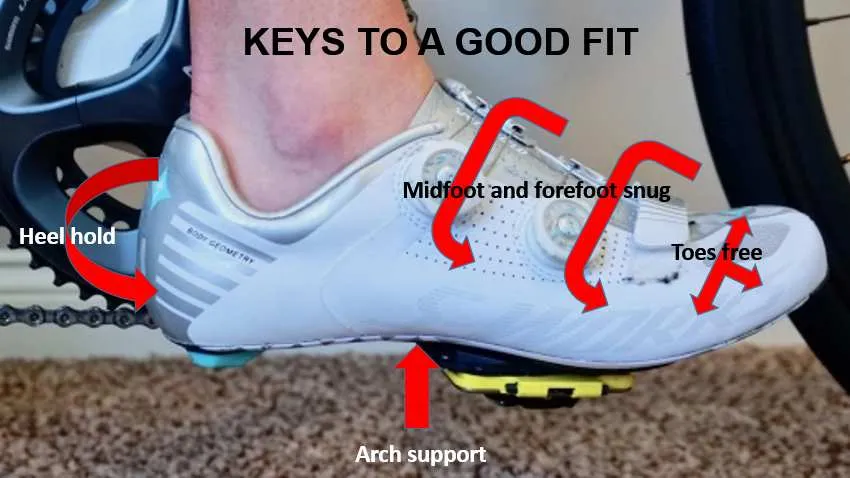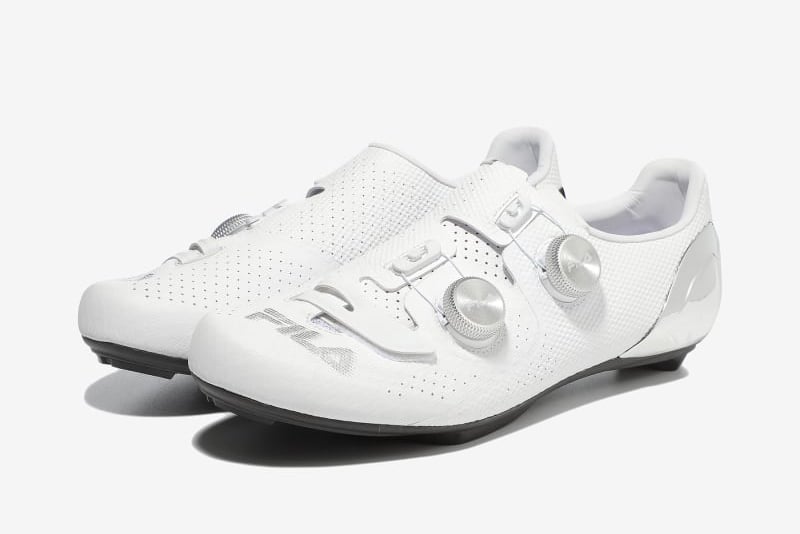The Important Factors to Choose Right Cycling Shoes
How Should a Well-fit Cycling Shoe Feel?
Not as many as you think, a properly fitted daily shoe should resemble a professionally fitted bicycle shoe in many aspects. Here are some factors depending on feeling well in cycling shoes:
-
Cycling shoes that are properly fitted should provide even pressure on the in-step and a snug heel.
-
Bicycle shoes that fit properly should provide you with some toe room at the end and hold your forefoot steadily without pinching or constricting it.
-
A well-fitted cycling shoe shouldn't have any significant gaps in the cloth or wrinkles in the fabric.
-
In a pair of well-fitted cycling shoes, the ball of your foot should be at the broadest part of the shoe to allow for proper cleat insertion within the shoe's adjustment range.
So what influences your feelings when you wear cycling shoes and how should cycling fit?
How to Choose the Right Cycling Shoes?
1. The Width

The widest part of your feet is the front along with the balls of the foot. When your toes and feet are entirely spread out in front, you are at the proper width. Here, when the foot makes contact with the pedal, pressure is applied to the pedals. If you experience any uncomfortable pressure in this area after purchasing a pair of shoes, wearing them, and performing a cycling motion, the shoes are an ill-fitting pair. There shouldn't be any room on the sides at all. Otherwise, a sideways movement of the foot will cause injury.
2. Shoe Length
Cycling shoes do not have extra room in the front like trainers or jogging shoes do. Running shoes work fine because the front of the shoe will be contacted by the normal foot motion. The foot experiences very little rolling motion during spinning or cycling. Your foot is granted a small amount of freedom from cramping; a few millimeters should be plenty between the big toe and the insole's leading edge.
To determine where the ends fall while fitting your shoe, compare it to the insole.
See how much space there is between the front of your foot and the front of the shoe by pushing your foot back until your heel is fully in contact with the shoe end. Below is a size guide to help you start off on choosing cycling shoes.

3. Firm Hold

The ideal bike shoes will provide a secure fit at the heel. The results of two factors will show how well the shoe fits. When you walk with shoes, they should not fall out and pinch or feel uncomfortable. The shoes should be securely seated on the back of the foot with no heel movement. The foot should be snugly and comfortably enclosed by the shoe's upper. When you try the shoes on, they should feel sturdy and secure. When shoes are excessively big, there are microscopic contacts that result in hot spots, heel slip, and pressure points on the foot.
4. Sound Closure
The shoe's locking mechanism provides the necessary support, which makes all the difference between a well-cosseted foot, especially on the upward pull stroke. No matter what, velcro and buckles should not be pressed. The deflection points for twist fasteners should be positioned properly for maximum stability. The upper of the shoe crinkling, which could result in pressure spots on the foot, is an absolute giveaway that you're doing it improperly. If creases appear while the shoe is tied and closed, your shoe may not be a perfect fit.
5. Material Selection
The most popular materials for uppers are leather, satin, suede, and canvas. Uppers can be created from a wide range of materials. Mesh fabric that is breathable is frequently used for athletic shoe uppers. Simple straps can serve as the uppers for sandals and flip-flops.
The upper, whether it is composed of one piece or several, is created to fit the foot and keep it firmly attached to the sole while walking and standing. There are many parts that must work together properly for this, each having its unique purpose. To meet these needs, a shoe upper may use various materials in various locations.
6. A Quality Insole

Consider a shoe with a multi-stiffness sole that is not unilaterally stiff across the whole sole. Bi-injection combines a more accommodating carbon with stiffer carbon to give the sole a little more flex in peripheral regions to protect the rider's foot while still maximizing torsional stiffness and responsiveness. Power transmission is fantastic, but not at the cost of pain or harm.
7. Support for The Heel
When you choose bike shoes, you should consider that the heel part should be snug and firm fitting without pinching. The back end of the shoe should fully support the heel and not allow it to move around too much. This support is essential to prevent injuries when cycling or spinning.

